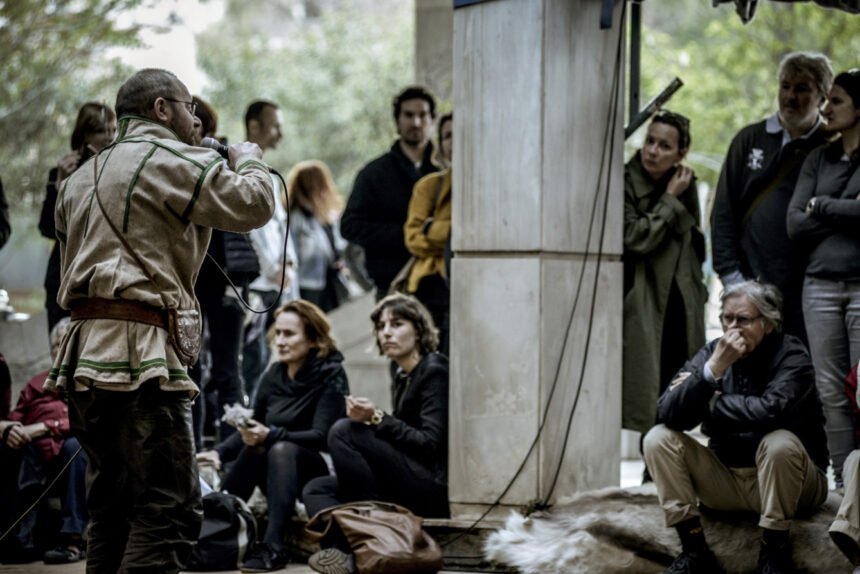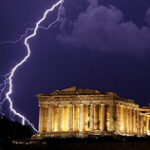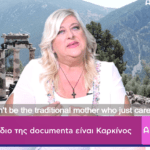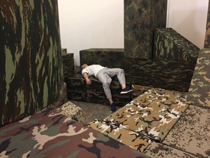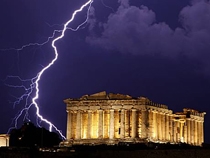On the border of the culturally ‘known’: European Everything and the Sami presence in documenta 14
Delia Tzortzaki
In September 2016, few months before the official opening of documenta 14 in Athens, Adam Szymczyk visited Karasjok, a town close to the border with Finland. There, the artistic director met with Joar Nango, a Sami architect and performance artist, as well as other members of the Sami cultural community, thus confirming his intention to invite Sami artists to Athens and Kassel. This gesture exemplified the core of documenta 14’s agenda, namely an emphasis on revisiting imperial, colonial and ‘old-world’ rationalities and narratives by paying tribute to the 100-year celebration of Sami political presence in the Arctic. The symbolism of launching the official journal of documenta 14, South as a State of Mind, in Karasjok played upon the establishment of the Sami Parliament in that very city in 1989, and traced the historical line even further back, to the first congress of Sami in Norway, in 1917.
Curating documenta 14 meant targeting tensions constitutive of national and supranational constructions. Control over reindeer herding, herding territories and the right of the Sami to keep their herds against the policy of the Norwegian state was one such case. Reindeer herding in Lapland, an area covering the north of Norway, Sweden as well as northwest Russia, has stirred a heated debate. The Norwegian state points to the threat of overgrazing in the High-North and wants the herders to put a percentage of their animals down. Szymczyk was also aware of Máret Ánne Sara’s artistic protest, a visual artist originating from the town of Kautokeino, in Northern Norway. Máret Ánne Sara brought the issue of reindeer herding to the fore by installing dozens of heads of dead reindeer in front of the court house in Tana, Finnmark, Northern Norway, where her brother, a young reindeer hunter, was on trial [1]. Joar Nango followed a different militant route. As one of the few remaining Sami practicing architects, he has been fascinated by and engaged in the role of metallurgy as a dynamic resource in hard climates such as Lapland[2]. Nango lives in Tromsø, Norway, but originates from Alta, in the county of Finnmark, not very far from Kautokeino. Alta is the second northernmost city in the world with more than 10,000 inhabitants. It witnessed a Sami rebellion in 1852 which resulted in the decapitation of two Sami leaders two years later. The bodies were buried there but the skulls were sent to Oslo, to be part of the Royal Medical Collection at the Royal Frederik’s University (now Oslo University). It was not before 1997 that the skulls were returned to Alta to be buried together with the bodies under an increasing international awareness regarding human remains and the right to ownership.
Joar Nango embarked on his project European Everything under the guidance of documenta 14 curator Candice Hopkins. Given that the Norwegian Embassy in Greece and the Norwegian Institute at Athens supported his presence in Athens, I had the chance to meet him in my capacity as Cultural Officer at the Norwegian Institute at Athens. I also invited Alexis Zoumpouloglou, a photographer friend, to attend Nango’s planned events and take pictures, some of which were later selected by the Hellenic Ministry of Culture to be part of an exhibition about foreign schools in Greece. Nango talked about his vision of a borderless state; utopia as stage, a moving platform, or a “traveling theatre,” in the words of Candice Hopkins [3]. The generated text / performance on stage would transcribe, so to speak, voices of people coming from diverse ethnic backgrounds, who, at the same time, are not in full accordance with the rules of citizenship and gender: Roma, Sami, other indigenous groups and transsexual people. The concept was much in line with documenta 14 Parliament of Bodies program in Athens and the idea of a “supranational”, “fluid”, “non-identity based” assembly of people [4]; only women are at the epicenter of Nango’s moving theatre. Nomads, actresses constantly on the go, embody the struggle for self-assertion. Keywords in the artist’s vision included: migration of people(s) and materials, barter economy, flexibility, fluidity, and improvisation. The seminomadic life of Sami in Lapland, husbandry in the snowy lands, harsh and unpredictable weather conditions, have been the primary source of Nango’s political and expressive vocabulary. This is how architecture, metallurgy and his general interest in drawing on limited resources, becomes entangled with humans. In Nango’s narrative, physical survival depends on the redirection of the attention towards products made of leftovers, waste materials, unwanted goods. Upcycling constitutes a new potentiality for sustainable homes, sustainable workplaces; humble resources are recognized as empowering. To be content with what one finds within reach suggests a utopian vision of overcoming learned contempt for the unacknowledged. Improvisation is the methodological tool for this to happen. Thus the narrative proposes a theatre constantly on the move, involving bodies which, as a rule, are unacknowledged and at times stigmatised. “Identity is birthed from lack” comments Candice Hopkins “and coming to fill this absence are close connections made to land, language and territory” [5]. However, as in utopias, the proposed scheme is overwhelming, all-encompassing and rigid in its capacity to comment on distinctions “from within.” An a priori judgement of who is visible and who is not seems to be the obvious predicament of such an approach, which, while beneficial in its view of social freedom and unencumbered movement across nations, leans towards prejudging, if not essentialising, social difference.
Several months before the official opening of documenta 14 in Athens, Joar Nango rented a three-storey deserted factory in Elaionas within a metal scrapyard bordering a Roma camp. He turned it into an artist’s studio and a welcoming place for passersby to talk about art (or not) and be served some reindeer soup. The plot and building fascinated Nango in terms of material economy and the traditional metallurgy techniques. He got familiar with Roma groups and local metal workers, exchanged know-how and observed the tricks of the trade. The scrapyard served as a ‘field’ of practice drawn on Sami tradition of putting up and dismantling workshops, yards, camps according to needs and calculated choices.
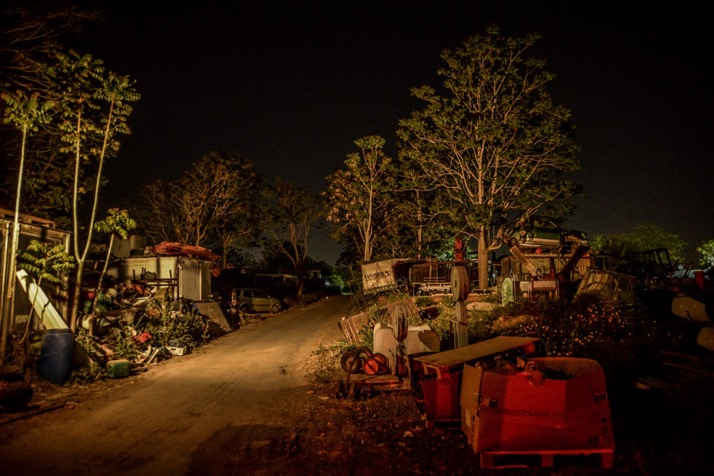
His initial plan was to invite a group of feminist actresses from Bucharest to perform in Elaionas. The Roma feminists never came due to opposing views as to how they should pursue the event. Still, those ideas survived and took the form of the curatorial approach. European Everything happened within the first days of documenta 14 in Athens. The event was modular, involving two locations, which I will shortly present below, multimodal—including soundscapes, text, image and kinaesthesia—and multisensorial, appealing to literally all the senses.
The first version of his work was presented at the atrium of the Athens Conservatoire (April 8 and 9, 2017). Rudimentary frames and reused materials were the backbone of his installation. A wooden construction alluded to a tent while huge reindeer skins covered the ground and served as improvised beds, sofas, warming mats. It was a chilly and rainy night. Warm reindeer soup and meat was served while a Sami joik singer was performing. Joik music, deeply rooted in Sami culture consists of almost primordial sounds, often like mumbling, coming from deep inside the throat [6]. It is said to directly represent nature, places or people. The joiker sang, that night, mixing his voice with hip hop songs and electro soundscapes. No prior rehearsal had taken place, the musicians had just met. Improvisation, free movement of the audience inside the ‘stage’; some were eating, lying down, sleeping even, but most people stayed for hours in the cold, captured by the bodily tension of the experience.

The second event took place in Elaionas, the night of the following day, a cold Sunday night. Nango threw a wild party in the scrapyard, a multiethnic, Dionysian spectacle including Pakistani transsexual dancers on a reindeer skin, on a stage mostly created by light projections, somewhere at an open space of this enormous, enormously deserted plot, off Piraeus Street. Pork from Eastern Europe, beer and spirits were available. An ecstatic dance with electro music and blinding lights kept Greeks and foreigners alike till eight in the morning. No documenta 14 officials, no apparent institutional context; just people , (mostly foreigners, documenta 14 visitors and the artist’s personal contacts) dancing like moths drawn by light, at a place where taxis were absent and one could either drive or walk through the unfriendly post-industrial quarters, along with packs of stray dogs.
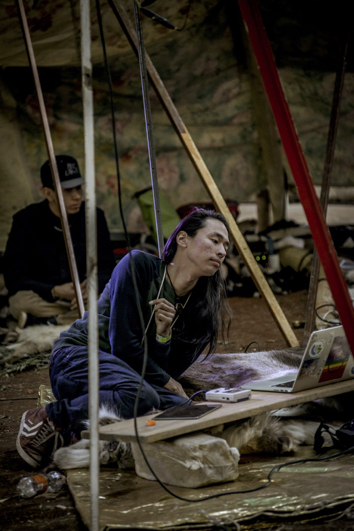
Nango is a person who nods at the future. His intense outlook on life, does not, from the outset, evince nostalgia. His focus is on reversing invisibility by using whatever he has at hand. His idea of potentiality lies in mixing people with no prior knowledge of each other, often from different backgrounds and letting them learn from each other, like he himself apprehended new metallurgical techniques from the workers in Elaionas during his stay, as he often told us. That night, the force of bringing unknown ‘actors’ together, performers, loners, audience, professionals, unleashed the energy of an unrehearsed encounter. European Everything seemed neither a romantic reenactment, in the form of ‘fish-smelling’ museum galleries popular in the 1980s and 1990s in England and Scandinavia, nor a sheer play of the intellect. There was no lamenting in European Everything, no root seeking or manifestos. It drew attention to people’s chemistry together, the twists and turns of the dance, an event that offered glimpses of the wonders anonymity can bring. The artist was watching the evening developing into a post-midnight frenzy, standing at the doorstep of his elevated cabin, in the middle of the scrapyard, very anxious to see the end result of his idea. I left the party at three a.m. with Nango’s words in my head, about how satisfied he was witnessing the success of the event-in-progress and how stressed he had been before it started. I was filled with mixed emotions: strong detachment and at the same time an experience incomparable to anything I had seen, lived or sensed before. Place, people, scenery bordering the unknown. Yet, it was as if, somehow, I had witnessed a spectacle that was intellectually familiar.
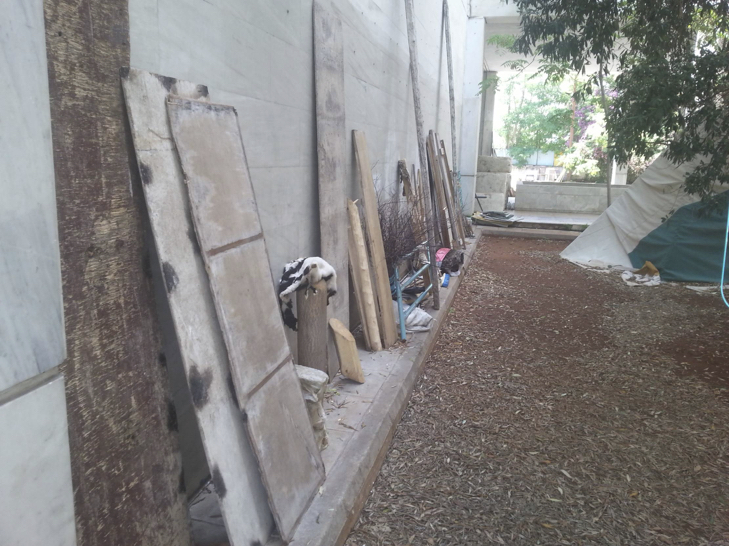
A few days later, Nango called me from Kassel to inform me that the reindeer skins were stolen from the Conservatoire in Athens (all but a little one). He told me that there had been protests from activist groups leaving notes about the skins but he could not say whether they were animal right activists or not. The violation that occurred at the site hurt Nango deeply; he was angry and disappointed. He said that he had brought the skins from the North down to the South in a gesture of friendship, but in the end he was deprived not only of his family heritage—of great importance to him—but also of a functional, invaluable life companion. He kept asking me whether people were ignorant of history, Sami history, identity ties, whether they were just hated documenta. The purpose of the act will remain unclear to us. What could it possibly state? Is it indeed ignorance, prejudice, misinformation? Is it a clash of power among groups claiming space in the contested territory of “rights”? Rights (of the animals), rights (of humans over the animals), ties (between humans and animals), distinctions (among those diverse positions) make utopias crashing from within and render us short of the right vocabulary. Is the term ‘vandalism’ even proper in this case? What struck me most, however, was the emotional power of Nango’s reaction towards “us” the Sami. As if the narrative of a unified “from below” became disempowered, disenchanted even and all of a sudden: distinction, “us and them,” took over.
I did enjoy Nango’s work for its boldness and sense of presence. At the same time it made me think that, grand narratives aside, what we might keep is the following: European Everything acknowledges subjectivities at the periphery of contemporary gaze and while it underplays the issue of distinction and clash, it sharpens nonetheless the attention towards the microscale of human action. Moreover, the tension detected in Nango’s artistic activism between the non-visible and the totally exposed, between carefully uncovering and strongly highlighting, between the sharpness of wasted metal in the yard and the spectacle made out of it, suggests a methodology that might be socially effective, if turned towards an anti-utopian pragmatism.
Delia Tzortzaki is a museologist employed as adviser at the University of Bergen – Norwegian Institute at Athens. She holds a Ph.D. in Museology (Roskilde University), an MA in Gallery Studies (University of Essex) and a BA in Archaeology-History of Art (National and Kapodistrian University). Since 1992 Delia has held posts in museums and cultural bodies including the Hellenic Ministry of Culture and Sports, organized exhibitions and lectured extensively in Greek and Danish universities. Her most recent lecturing environment has been the Athens School of Fine Arts (ASFA) where she taught museology and curation studies from 2009-2014 and 2016-2019. In 2018 she represented ASFA and the Norwegian Institute at Athens by curating Beat: From portraits to selfies (Old Library, ASFA), a collaboration between the School and the University of Agder (Norway). Her main research interests focus on the evolution of the museum phenomenon, the epistemology of digital heritage and novel curation practices including clothing in circular economy. Latest publication: “From the Ideal to the Spectacular. Hellenic Antiquity and the Discourse of Authenticity”, Museologica Brunensia, 2019/08/02, 2-14. Main editor of the forthcoming volume The Theory of Museology. Main Schools of Thought 1960-2000.
Notes
[1] See Katya García-Antón on Máret Ánne Sara’s work Pilo o’ Sápmi – Shouts from the Shit Flood, in documenta 14:daybook (page 29 April 2017). The work was presented in Kassel, see also https://www.documenta14.de/en/calendar/24863/pile-o-sapmi (last accessed April 28, 2020).
[2] For an update on Joar Nango’s artistic endeavor see https://www.fib.no/en/articles/joar-nango-is-the-festival-artist-2020/ (last accessed April 29, 2020)
[3] See Candice Hopkins on Joar Nango in: documenta 14: daybook (page 27 April 2017). For theatricality as an empowering form of political engagement see Stavridis, Stavros, Apo tin Poli Othoni stin Poli Skini [From the City Screen to the City Scene], Ellinika Grammata, 2002.
[4] Szymczyk, Adam, “Επαναληψιμότητα και ετερότητα – μαθαίνοντας και δουλεύοντας από την Αθήνα”, documenta 14: AReader (in Greek), p. 29.
[5] https://www.documenta14.de/en/artists/1405/joar-nango (last accessed April 28, 2020)
[6] https://www.visitnorway.com/typically-norwegian/sami-people/rebirth-of-the-joik/ (last accessed April 29, 2020)

